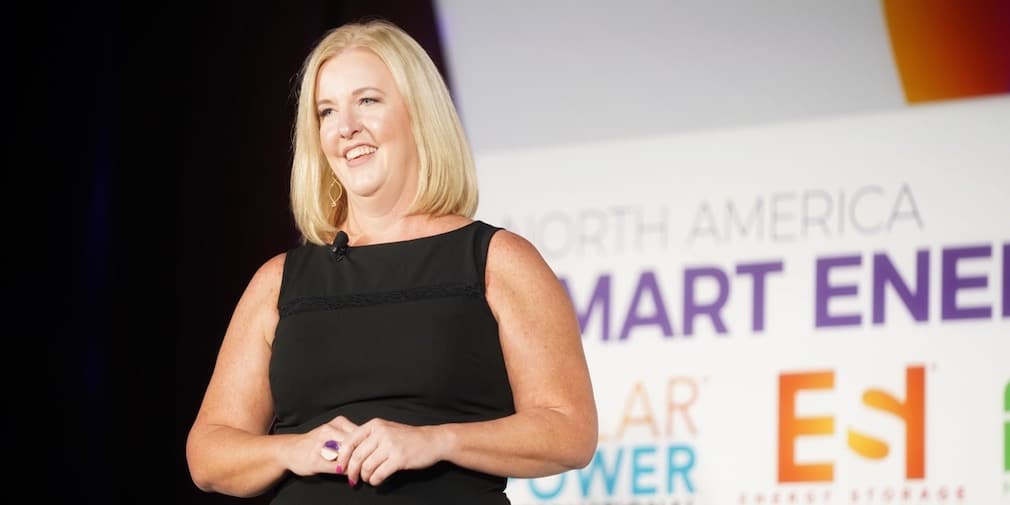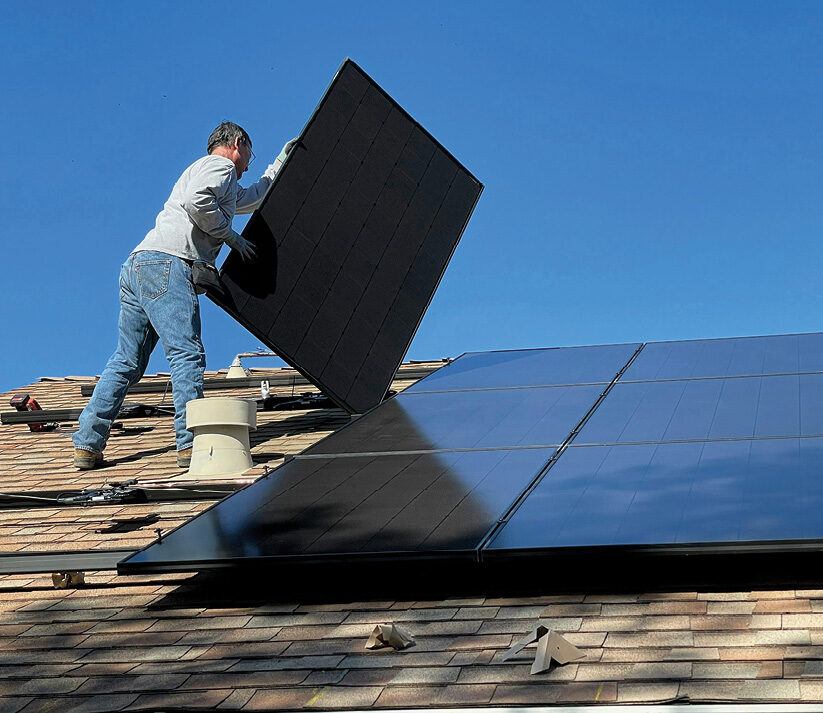Solar Power International is easily the largest trade show in the United States. This year it came to Salt Lake City, Utah, with more than 10,000 solar professionals congregating at the Salt Palace Convention Center.
It’s not clear exactly how many people are showing up this week, but last week SEIA estimated that this year’s show would have 19,000 attendees and 700 exhibitors. With much of the 515,000 square foot-show floor occupied by crews assembling booths an forklifts moving crates yesterday this did not seem impossible.
The opening session was also well attended, with hundreds filling the auditorium. And this year the Opening Session did not feature a panel of utility CEOs as it did last year, but instead Solar Energy Industries Association (SEIA) leaders pushing a political mobilization which they say could enable solar to reach 20% of our electricity supply by 2030.
Extend the ITC
The big call by SEIA CEO Abigail Hopper and Board Chair Tom Starrs involves extending the Solar Investment Tax Credit (ITC), which is scheduled to step down at the end of this year from 30% to 26%, and decline to 10% at the beginning of 2022, while ending for individual taxpayers entirely.
This would not be the first extension of the ITC; most recently the ITC was set to step down at the end of 2016, and its extension at the end of 2015 created a runway for the industry.
However, this time SEIA is pushing for an ITC extension with a Republican trifecta in Congress and the presidency. And while the ITC has enjoyed greater support from Republicans in Congress than other renewable energy policies, it is not clear whether the inclusion of an ITC extension would trigger a veto by President Trump.
SEIA CEO Hopper noted that while the organization supports an existing bill by Senator Ron Wyden (D-Oregon) calling for technology-neutral clean energy tax credits, she indicated that a standalone ITC extension has better odds.
SEIA CEO also noted that the organization is “fighting like Hell for good policy all across the country”. And while SEIA is active in policy in most states that pv magazine has covered, beyond a significant legislative win in South Carolina it is not clear where SEIA is having significant victories.
And while Hopper has overseen a shift in strategy towards the states, it is not clear how much of the organization’s staff and budget are now going to state-level work versus the federal policy where it has traditionally focused.
20% by 2030
SEIA says that with an ITC extension and other policy changes solar could reach 20% of total electricity generation by 2030, which it describes as ambitious but achievable. We’ve taken issue with the description of this as ambitious, and yesterday got more clues as to how SEIA came up with these numbers.
During her presentation Abby Hopper showed a slide by Wood Mackenzie that shows the impact of an ITC extension, which she says would add dozens of gigawatts of solar over the next decade. However, Wood Mackenzie’s base case shows a dip in solar installations after 17 GW annually in 2020 and 2021, and for the annual market to not reach 20 GW until 2027.
No one is really sure what the market will look like if the ITC is not extended; the last year that we didn’t have an ITC for solar more was than a decade ago, when the industry was very different. Furthermore, given the rapid developments in the U.S. solar market and power market writ large, forecasting installation volumes more than a few years out is very difficult.
However, we at pv magazine find Wood Mackenzie’s forecast to be pessimistic given the falling costs of solar and solar plus storage. When you include the increased geographic presence of large-scale solar, with massive pipelines developing in Texas, Florida, the Midwest and the South, we suspect that solar and storage are going to continue to displace conventional power, ITC or no.
The political climate
SEIA has repeatedly noted that it is fighting an uphill battle, with SEIA Chair Tom Starrs noting that the political influence of the coal and nuclear industries are “disproportionate to their growth potential.” Hopper expanded on that theme, stating that solar must “fend off well-funded challenges from energy sources that are heading towards obsolescence”.
However, the political discourse on how the United States could act on decarbonization is changing. Two of the three top polling candidates for the Democratic nomination (Bernie Sanders and Elizabeth Warren) are calling for a full decarbonization of the electricity sector by 2030 or 2035, and most of the Democratic candidates have endorsed rates of decarbonization that would be unthinkable a few years ago.
In contrast to these platforms SEIA’s 20% by 2030 is not ambitious, nor would it allow solar to play the leading role in reducing carbon emissions to the level that scientists say that we need to in order to avoid a 2 degree Celsius rise in global average temperatures.
When confronted with both this disparity and that SEIA’s rate of market growth under its “ambitious” program is below historical levels, Hopper told pv magazine that the primary challenge is “taking market share from incumbents”. She also noted that “if there is additional federal support, we will welcome that.”
The subtext here appears to be that SEIA is by no means counting on a more favorable political environment. And these are the forces that SEIA is caught between – a push for rapid decarbonization on the left, but the reality of dealing with Republican dominance of a Congress awash in fossil fuel money – not to mention the Trump Administration.
This content is protected by copyright and may not be reused. If you want to cooperate with us and would like to reuse some of our content, please contact: editors@pv-magazine.com.









I bet “The Smarter E” or better known as Intersolar Europe in Munich is a bit bigger than SPI and it is also “Western Hemisphere” as far as I know 😉
Intersolar Europe is huge, for sure. But it is not in the Western Hemisphere.